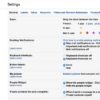The public may have mixed opinions about Windows 10, but this hasn’t stopped Microsoft from delivering what it promised. Their promise? To continually improve its platform. Despite its rocky start, Windows 10 has been getting major upgrades at a rapid pace and its creators just confirmed that another one may be on the way. In a revelation made to a team of developers at Ignite Australia in recent weeks, Microsoft disclosed through a presentation that a major update will follow by the end of the year. The Windows 10 upgrade unnamed service pack will follow the Creators Update (the Redstone 3) and we’ve still got little information of what it will contain. Tech experts, however, have given out a few hints on what the update may include.
What Redstone 4 Might Unveil
To begin with, there are speculations the update will highlight Project NEON. It’s a major redesign for Windows 10, which includes aesthetic improvements and a unification around a new design language. Judging from the leaks we’ve seen so far on Project NEON, it looks awesome.
Aside from the potential new look that Windows 10 will soon have, we’re curious to see how it’ll tie up with the rumored Windows Cloud―a possibly new variant of Windows 10. The leaks of this widely speculated operating system show an uncanny resemblance to the failed Windows RT as it only runs Universal Windows Platform (UWP) apps. In case you don’t know, these apps you purchase and download from the Windows Store run across all compatible Microsoft Windows device.
What this means is that this upcoming Windows 10 variation could be the primary contender to Google’s increasingly capable and incredibly lightweight Chrome OS. And we could be interacting with it no sooner than this year.
A New Windows 10 Upgrade?
You heard that right. Microsoft may be working on the next Windows platform as early as today. It’s frankly an odd direction, considering that Windows 10 is barely two years old.
This incredible piece of information shows what potentially could be the next Windows operating system (OS). For the record, it’s unlike anything we or anybody has seen before.
New OS Dubbed “Windows Cloud”
News of a mysterious OS first circulated weeks ago when code references hinted about it in the latest beta for the upcoming Windows 10 upgrade. While Microsoft was quick to quell the rumors, people have already got their hands on an actual build of the so-called “Windows Cloud”.
Curious what was found out? Well, they tested what could be a stripped version of Windows 10.
As mentioned earlier, it only runs Universal Windows Platform (UWP) apps or apps that have been programmed to readily run on both mobile devices and desktop interface. Run a standard desktop program on the Windows Cloud and you’ll be denied with the message: “The app you’re trying to run isn’t designed for this version of Windows.”
It’s also curious to see Microsoft tag “cloud” onto the name of this potential Windows 10 variant. Unlike Chrome OS, it doesn’t run on the cloud. Could it simply mean that the system is incredibly lightweight compared to its predecessors?
A Replacement for Window 10?
If we go by popular speculations, Windows Cloud may very well be supplementing Windows 10 rather than supplanting it. The more we think about it, it may be that Microsoft will be using its own lightweight OS to go toe-to-toe with Chrome OS.
This no longer surprises us considering that Google’s cloud-based model has turned out to be an astounding success, profit-wise. It currently outsells Macs, and may have given Microsoft an idea to try and tap into that market.
On the other hand, there are rumors that this new Windows 10 variant could pave the way for the company to further test the viability of launching new business schemes. Keep in mind that Microsoft already has set up monthly rental fees in place for business ($7 for every user who uses Windows 10 on an enterprise-level).
A Potential Boom or Possible Bust
The last time we checked, Microsoft’s shot at managing two new Windows version resulted in a massive failure. They’ve explored new frontiers, sure, but it doesn’t take a genius to see that there was more downside to them launching Windows 8 together with Windows RT.
Would Microsoft commit the same mistake or has the brand learned from the past? We may have to wait and see.
What we know is this: Windows 10 may be Microsoft’s “last version” of its well-known platform. So, it’s doing everything in its power to make sure it’ll be a bigger runaway success.


